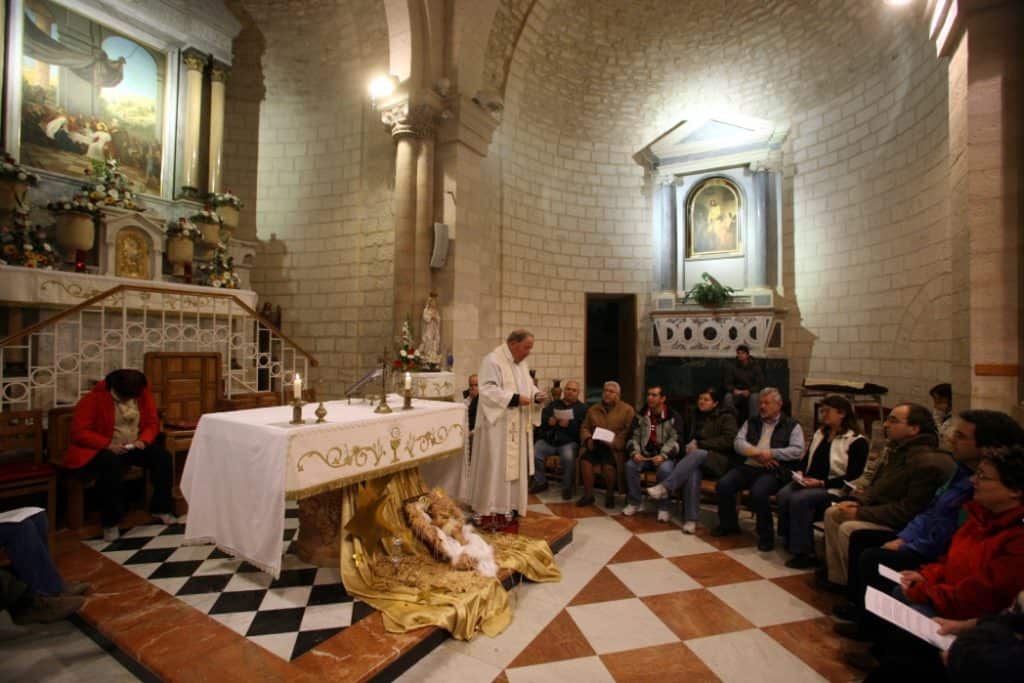The Wedding Church at Cana is a historic church located in the town of Kafr Kanna in northern Israel. The church is believed to be the site of the biblical miracle in which Jesus turned water into wine at a wedding feast in the town of Cana.

The Wedding Church is a Catholic-Franciscan church located in Cana. The church commemorates the miracle of the wedding in a Cana that Jesus performed when he turned water into wine. In the past, there was a synagogue there. Next to the church is a Greek Orthodox church that also commemorates the event.
In the Middle Ages, Christian tradition identified Cana at Khirbet Qana, east of Yodfat Stream and Mount Atzmon. Furthermore, the site contains the remains of a church from the Crusader period, built above Byzantine remains, as well as tombs and a columbarium.
Church of Bartholomew

Credit: Chris06, CC BY-SA 4.0, via Wikimedia Commons
Moreover, in 1551, Bonifacio Margoza reported that the Arab residents of the area pointed to the place as the site of the wedding miracle. Still, the church was already standing in ruins. This tradition has passed from the world, and today Cana is identified with the present site near Nazareth.
The archeological research revealed the remains of a private house built there between the 1st and 4th centuries. Today it’s seen once visiting the Wedding Church. In the 4th century, a synagogue was built on the site, and a cistern was dug in the center of its courtyard. Under a glass window on the church hall floor is a mosaic inscription in Aramaic, indicating the person who financed the laying of the mosaic floor in the synagogue.

The Modern Wedding Church
The Church is owned by the Custody of the Holy Land, part of the Franciscan order in the Catholic Church. The current church was built circa 1881 and expanded from 1897-1905, following efforts by the Franciscans to acquire the site between 1641 and 1879, when the acquisition was completed.
Twentieth-century archaeological excavations indicated that, before the current church building, the site housed a Jewish synagogue in the fourth and fifth centuries and tombs under the rule of the Byzantine Empire in the fifth and sixth centuries.
Last, in 1901, the current facade was built, and on September 30, 1906, Bishop Angelo Roncalli consecrated the altar. In the second half of the 1990s, the Holy Land began an extensive church renovation, which was completed in 1999.

